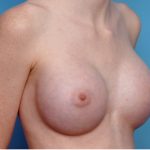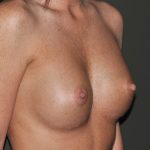Beauty has always been in the eyes of the beholder. The parameters of beauty also differ from one culture to another and also change with time and fashion. What does that mean for breast size, particularly in a Western culture? Well the eye of the beholder is highly influenced by the culture in which they live and around them.
Breast size in America are usually thought of as being proportionate to a woman’s body frame and build. The concept of 36-24-36 figure, though more of an historic female body concept, refers to breast size being equal to the width of the hips, with an indentation of a narrower waist in between the two. This is the classic ‘hourglass’ figure. That still applies to many American women although there has been a trend to be more extreme or almost top-heavy with a breast size bigger than a woman’s hips for some women.

There is no doubt that a woman’s body build is a key factor in determining the most suitable breast size. Greater hip width and/or a bigger stomach means that the breasts will have to be bigger to give a proportionate look. Conversely, in thinner women relatively smaller sized breast implants can be used to get the same look of fullness in the breasts.
Lifestyle also plays a role in a woman’s desire for an increased breast size. Active or sport enthusiastic women like smaller to more moderate size increases. Women trying to recovery from the ravages of pregnancy may just want to return to a size they used to have.Younger women often tend to want larger sizes. It should be no surprise that woman in the entertainment industry prefer larger than ‘normal’ size breast implants.

Then match what the breast base width suggests to that of pictures that a woman has selected from her breast augmentation results, focusing just on the final breast size. (the preoperative or pre-existing breast size or shape is irrelevant) Those visual images will provide either a confirmation that proportionate is the goal or whether a bigger or smaller breast size than one thought is the real objective.
Using these two breast implant size selection parameters, I have yet to have a breast augmentation patient that has chosen to undergo a revision for breast implant change due to unhappiness with their size result.
Dr. Barry Eppley
Indianapolis, Indiana




